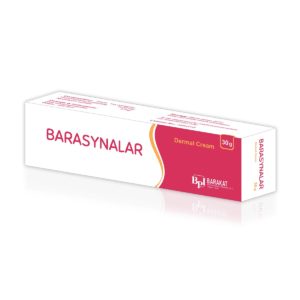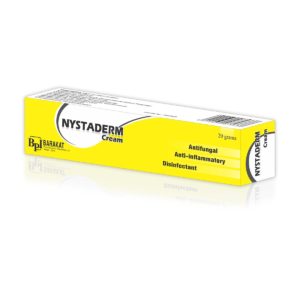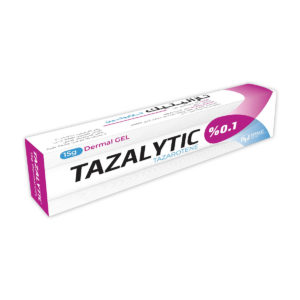Description
ACTIONS:
This product combines the anti-inflammatory, antipruritic and vasoconstrictive activity of betamethasone dipropionate with the keratolytic effects of salicylic acid.
INDICATIONS:
This product provides anti-inflammatory, antipruritic and keratolytic activity in the topical management of subacute and chronic hyperkeratotic and dry dermatoses responsive to corticosteroid therapy.
CONTRAINDICATIONS:
- The product is contraindicated in viral diseases including vaccinia, varicella, herpes simplex, and fungal infections; also, tuberculosis of the skin.
- Hypersensitivity to any one of the components of the product.
WARNINGS:
These drugs should not be used in or near the eyes.
It should be avoided contacting the product with mucous membranes. As well as, it should be kept away from the genital area and other orifices.
Pediatrics: Any of the side effects that have been reported following systemic use of corticosteroids, including adrenal suppression, may also occur with topical corticosteroids, especially in infants and children.
Systemic absorption of topical corticosteroids or salicylic acid will be increased if extensive body surface areas are treated or if the occlusive technique is used. Suitable precautions should be taken under these conditions or when long-term use is anticipated, particularly in infants and children.
Pediatric patients may demonstrate greater susceptibility to topical corticosteroid induced HPA axis suppression and to exogenous corticosteroid effects than mature patients because of a greater absorption due to a larger skin surface area to body weight ratio. Use of topical corticosteroids in children should be limited to the least amount compatible with an effective therapeutic regimen. Chronic corticosteroid therapy may interfere with growth and development of children.
HPA axis suppression, Cushing’s syndrome, linear growth retardation, delayed weight gain, and intracranial hypertension have been reported in children receiving topical corticosteroids. Manifestations of adrenal suppression in children include low plasma cortisol levels and absence of response to ACTH stimulation. Manifestations of intra-cranial hypertension include a bulging fontanelle, headaches, and bilateral papilledema.
PRECAUTIONS:
- Suitable precautions should be taken in using topical corticosteroids in patients with stasis dermatitis and other skin diseases with impaired circulation.
- Prolonged use of corticosteroid preparations may produce striae or atrophy of the skin or subcutaneous tissue. If this occurs, treatment should be discontinued.
- Patients should be advised to inform subsequent physicians of the prior use of corticosteroids.
- If irritation, sensitization, excessive dryness, or unwanted scaling develops with the use of the product, treatment should be discontinued.
- Application over extensive lesions may result in significant systemic absorption producing hypercorticism manifesting itself by adrenal suppression, moon facies, striae and suppression of growth.
- If an overt infection is present, appropriate antimicrobial treatment is indicated.
- If symptomatic response is not noted within a few days to a week, the local application of corticosteroids should be discontinued and the patient re-evaluated.
ADVERSE REACTIONS:
- The following local adverse skin reactions have been reported with the use of topical steroids; burning, itching, irritation, dryness, folliculitis, hypertrichosis, acneiform eruptions, hypopigmentation, perioral dermatitis, allergic contact dermatitis.
- The following may occur more frequently with the use of occlusive dressings: maceration of the skin, secondary infection, skin atrophy, striae, miliaria.
- In addition, the salicylic acid component may cause local reddening of the skin, desquamation, pruritus and smarting. Continuous application of salicylic acid preparations to the skin may cause dermatitis. Hypersensitivity to salicylic acid may occur.
PREGNANCY:
Since safety of topical corticosteroid use in pregnant women has not been established, drugs of this class should be used during pregnancy only if the potential benefit justifies the potential risk to the fetus. Drugs of this class should not be used extensively in large amounts or for prolonged periods of time in pregnant patients.
LACTATION:
Since it is not known whether topical administration of corticosteroids can result in sufficient systemic absorption to produce detectable quantities in breast milk, a decision should be made to discontinue nursing or to discontinue the drug, taking into account the importance of the drug to the mother.
DOSAGE AND ADMINISTRATION:
A thin film of the solution should be applied to cover completely the affected areas of the scalp or other areas. The usual frequency of application is twice daily.
For some patients, adequate maintenance may be achieved with less frequent application.
The product should not be used under occlusive dressing.
OVERDOSAGE:
Symptoms: Excessive or prolonged use of topical corticosteroids can suppress pituitary-adrenal function, resulting in secondary adrenal insufficiency, and produce manifestations of hypercorticism, including Cushing’s disease.
Excessive or prolonged use of topical preparations containing salicylic acid may cause symptoms of salicylism. Overdosage of salicylates may cause temporary hearing or visual disturbances, drowsiness and nausea. If this occurs, discontinue use until symptoms disappear.
Treatment: Appropriate symptomatic treatment is indicated. Acute hypercorticoid symptoms are usually reversible. Treat electrolyte imbalance, if necessary. In case of chronic toxicity, slow withdrawal of corticosteroids is advised.
Treatment of salicylism is symptomatic. Measures should be taken to rid the body rapidly of salicylate. Administer oral sodium bicarbonate to alkalinize the urine and force diuresis.
STORAGE CONDITIONS:
Store the product below 25°C.
HOW SUPPLIED:
Plastic bottles of 30 mL or 100 mL.





